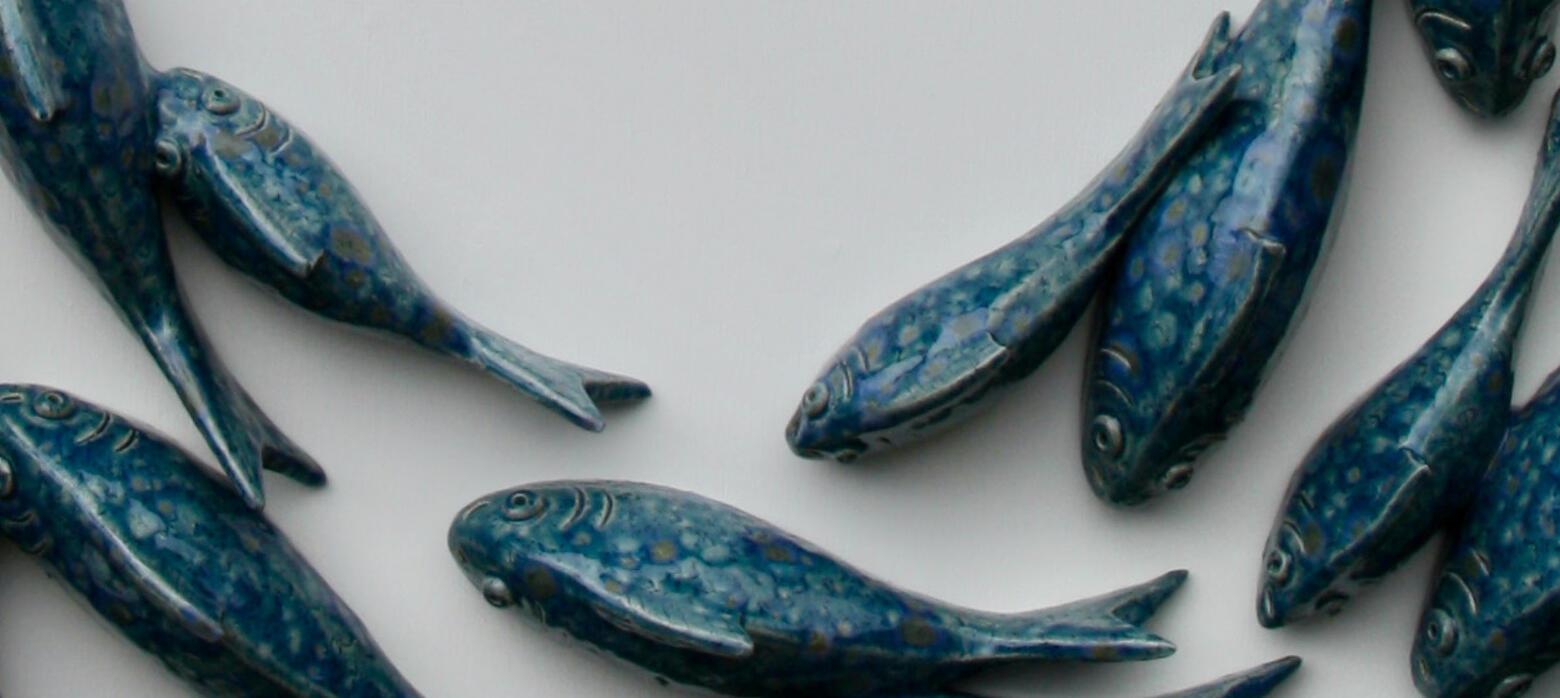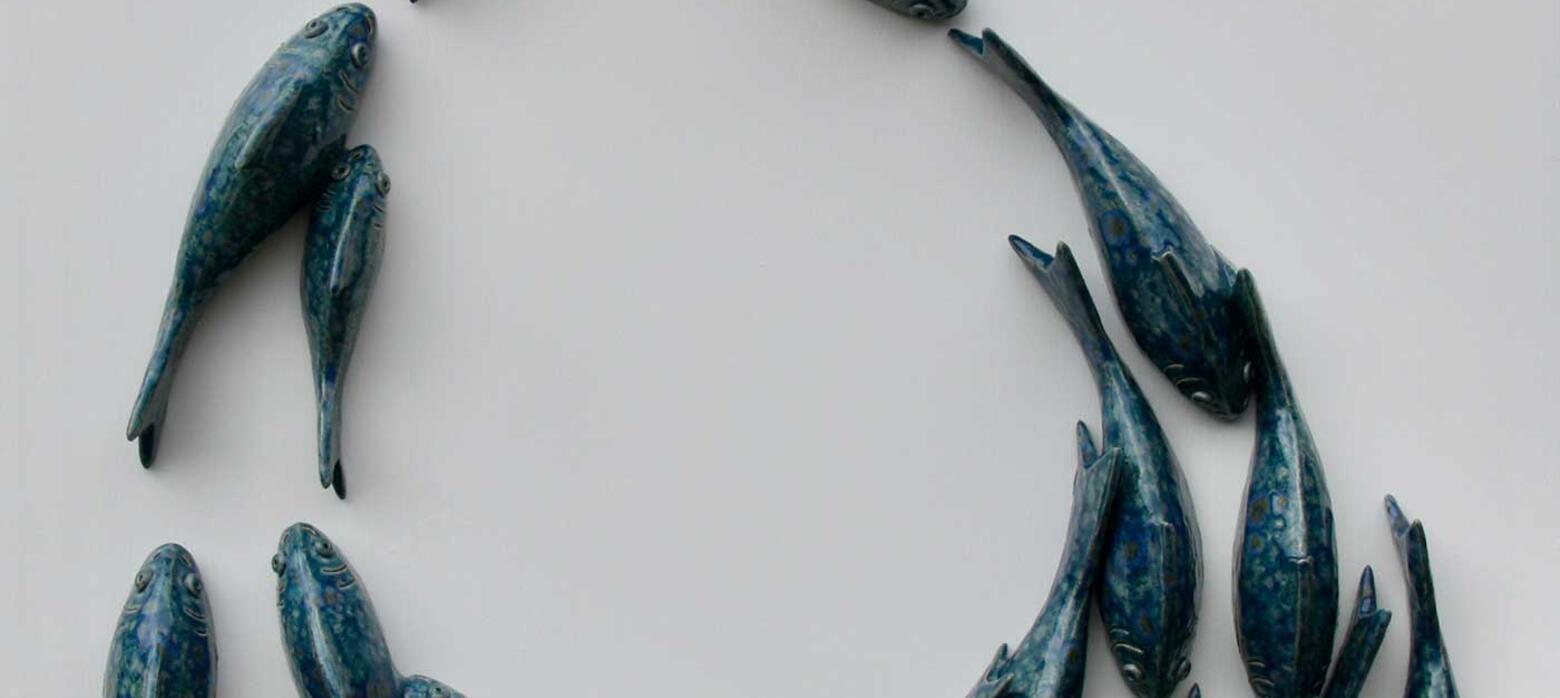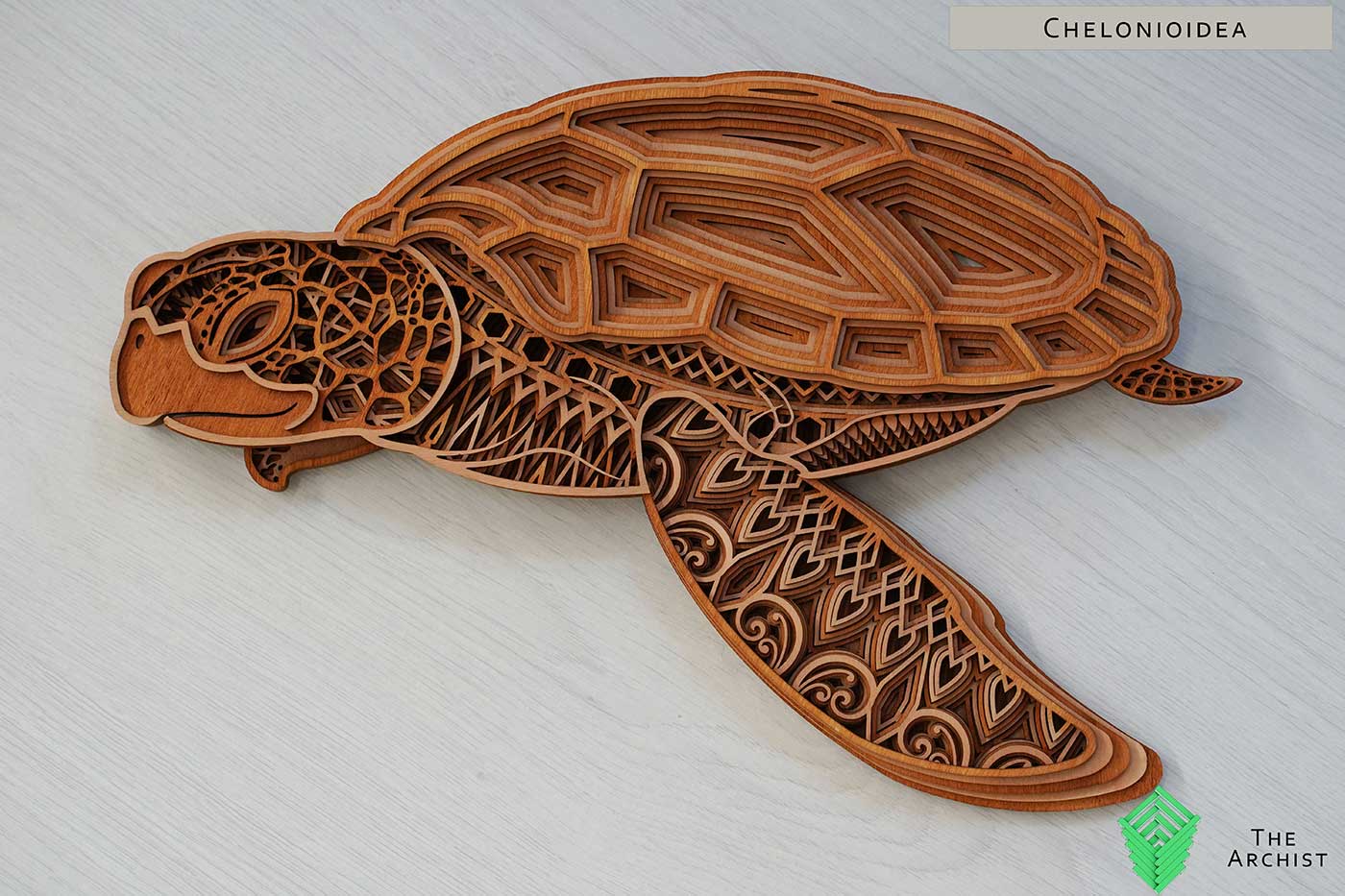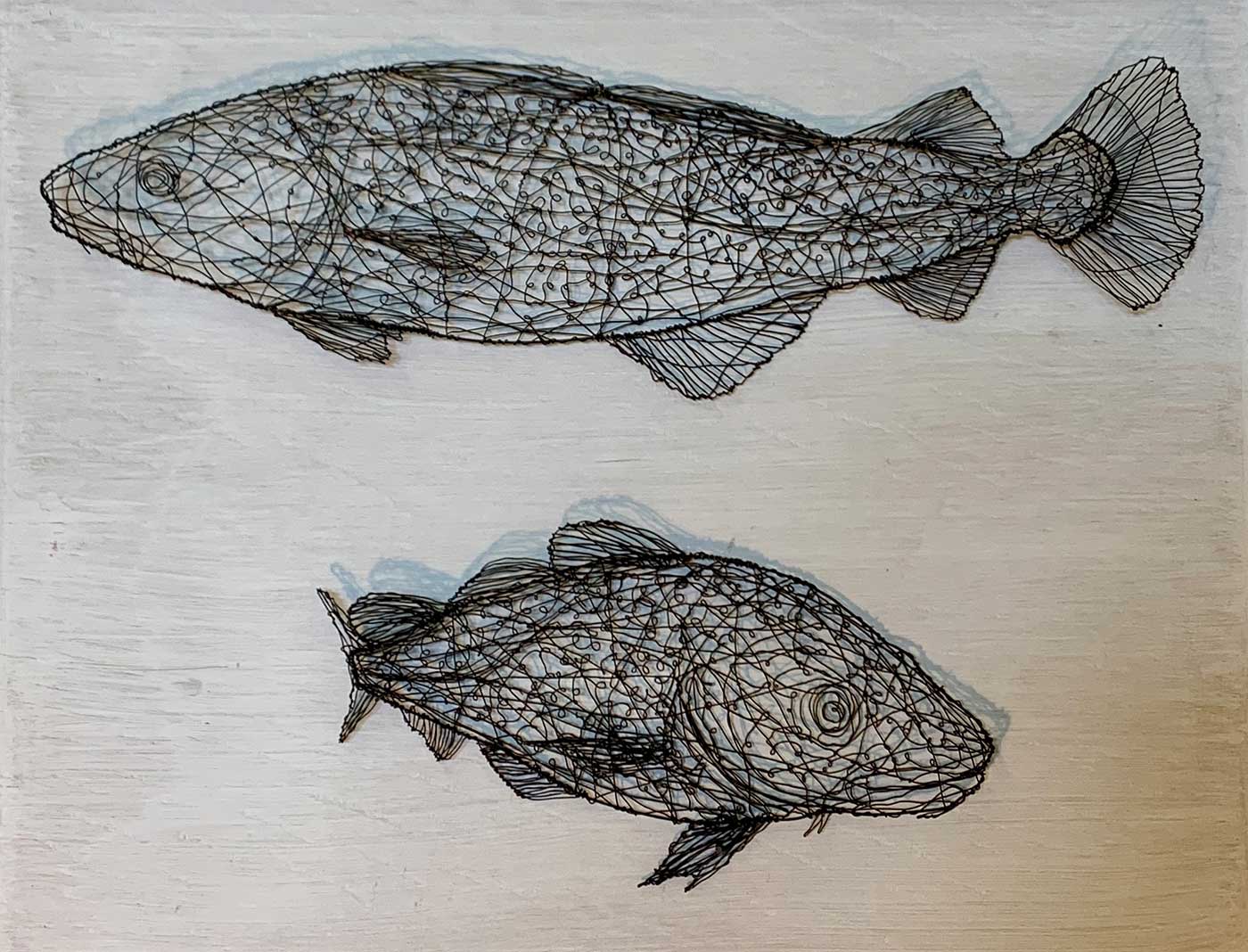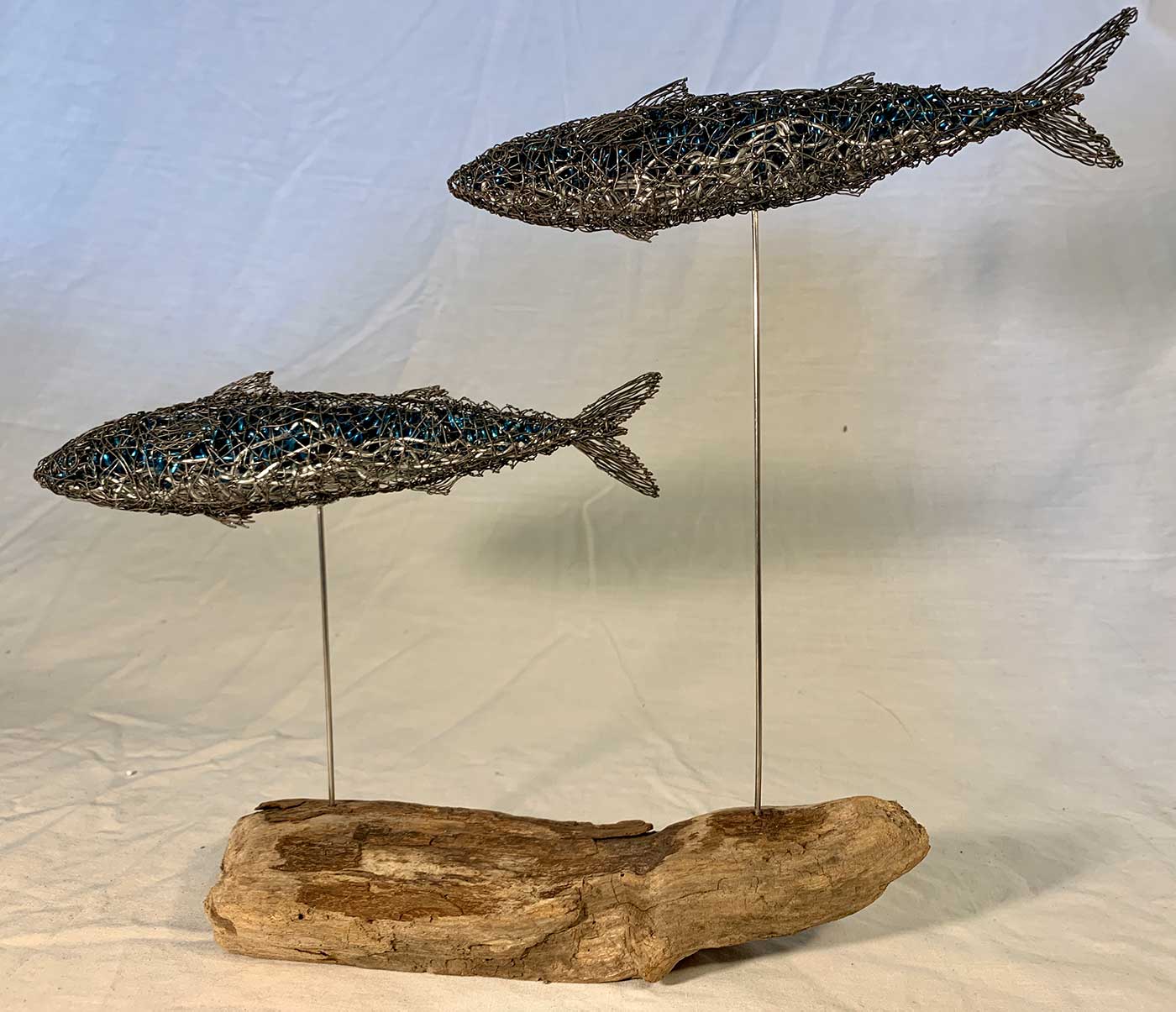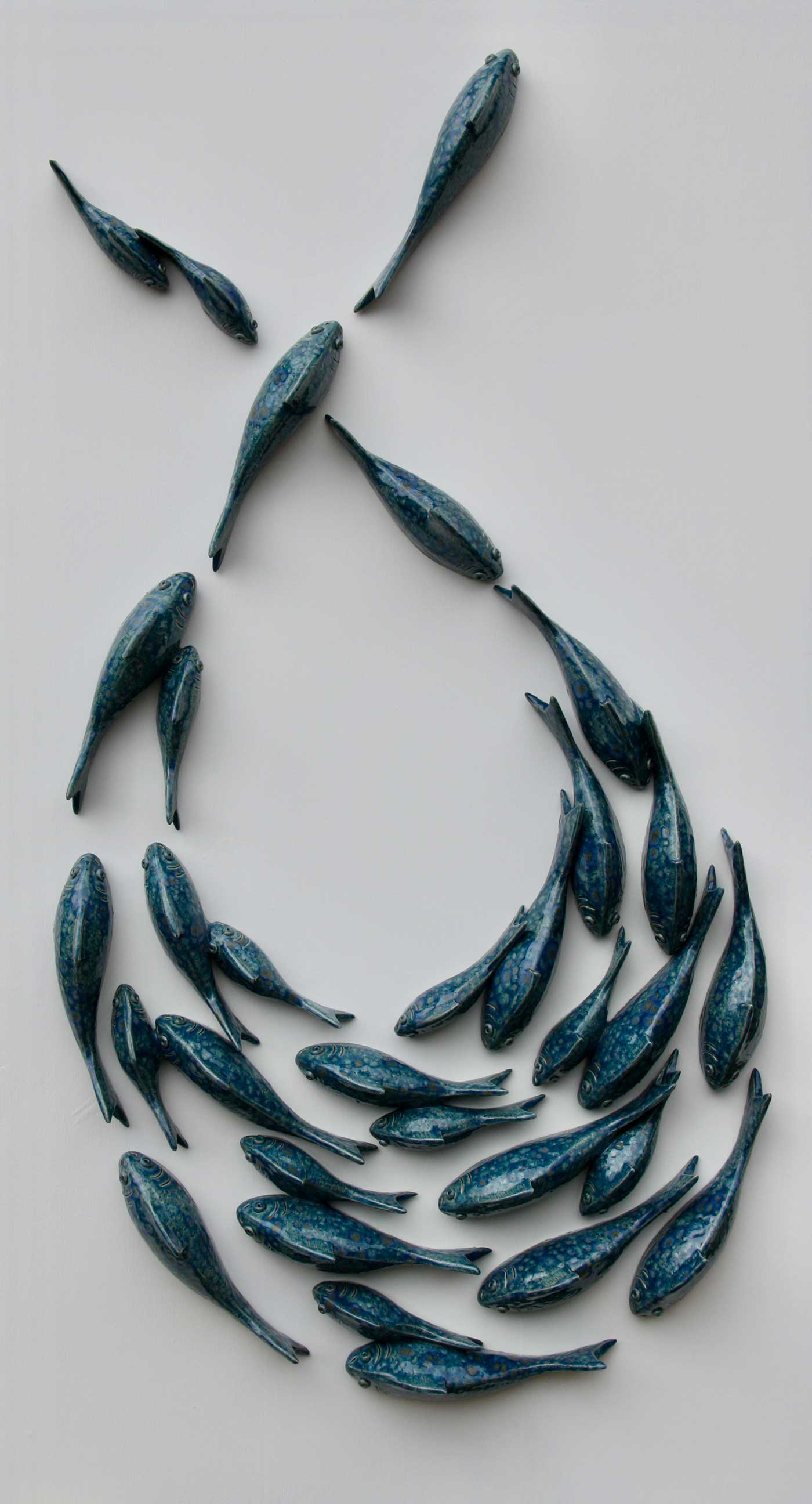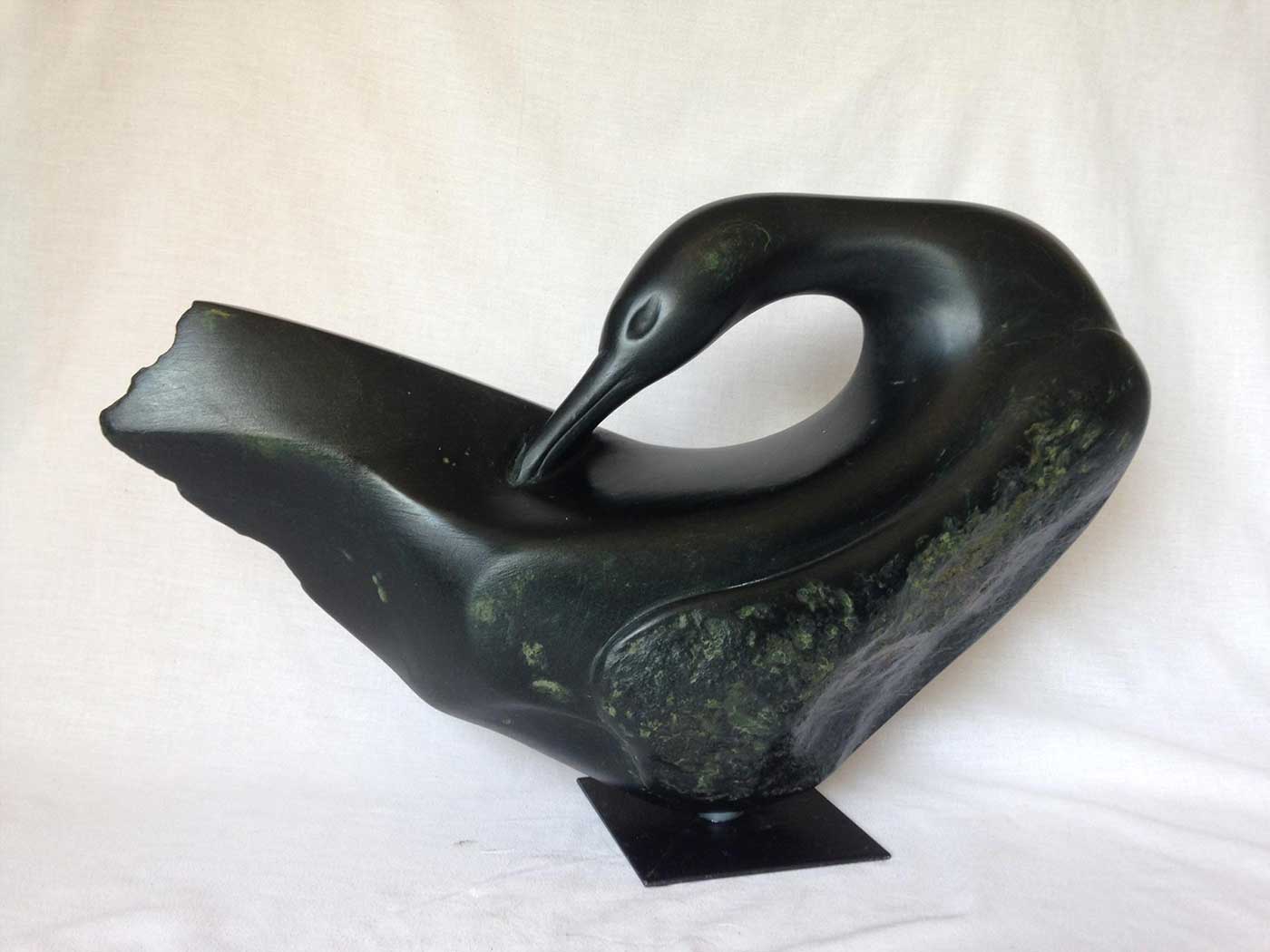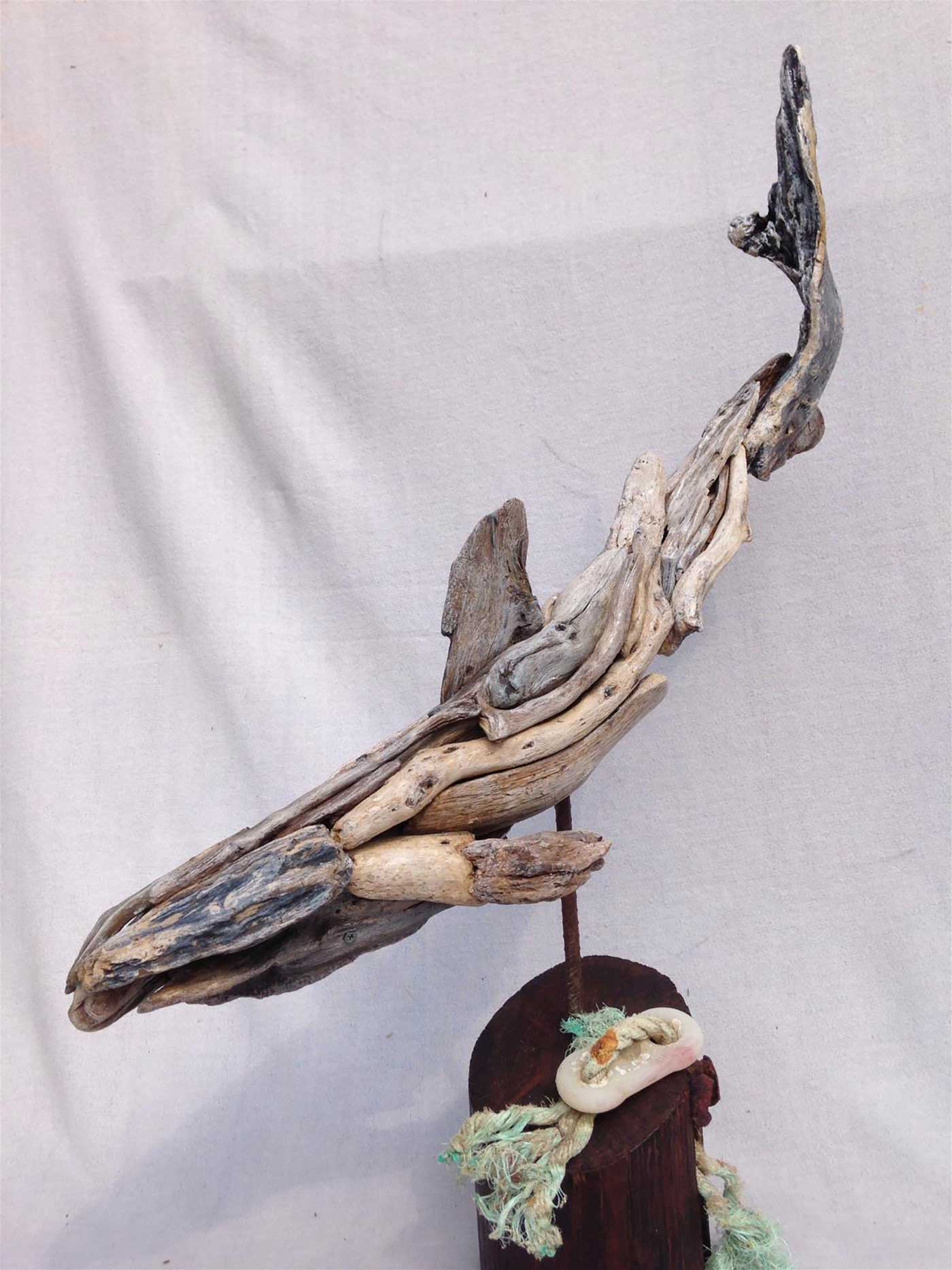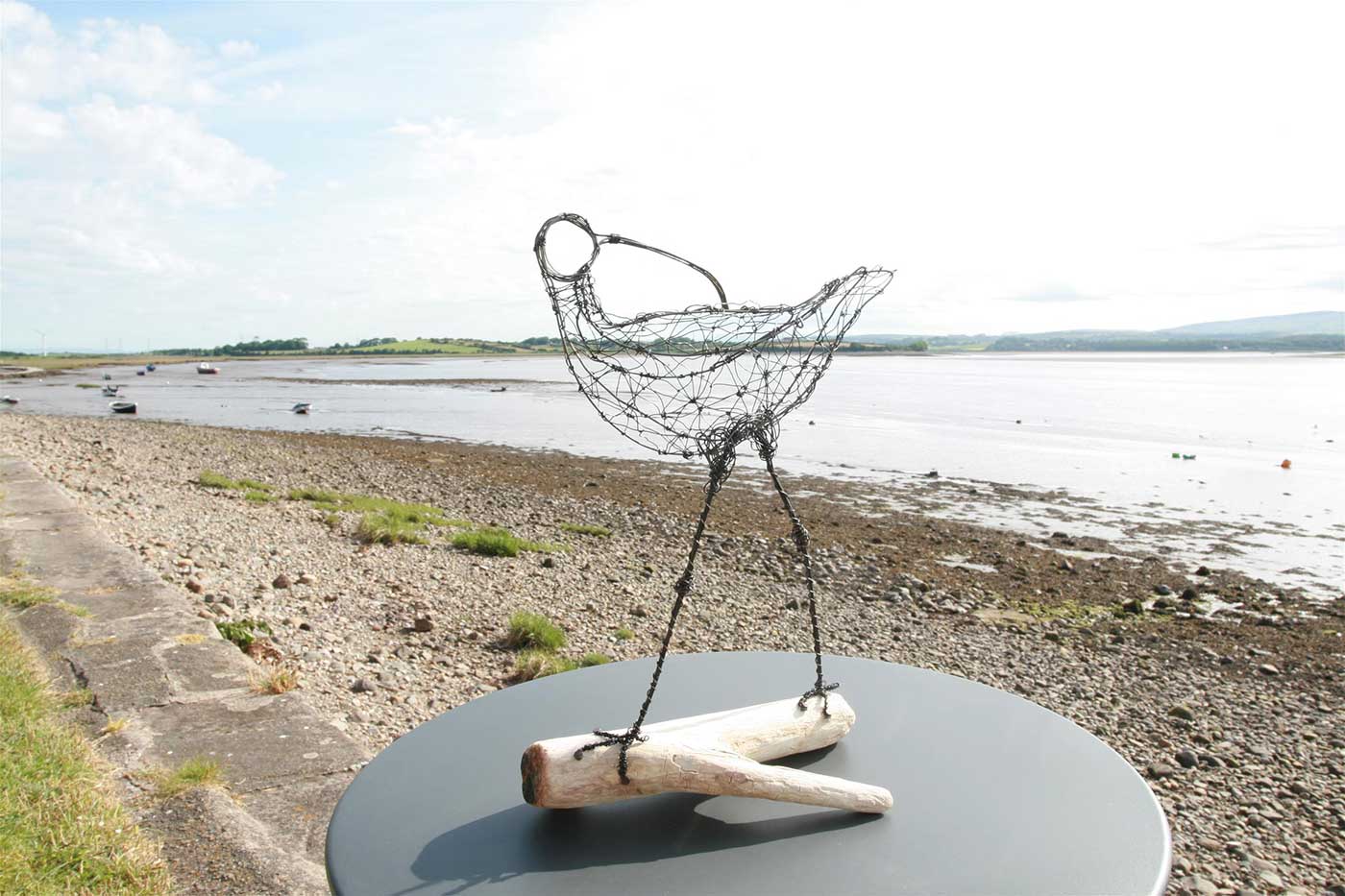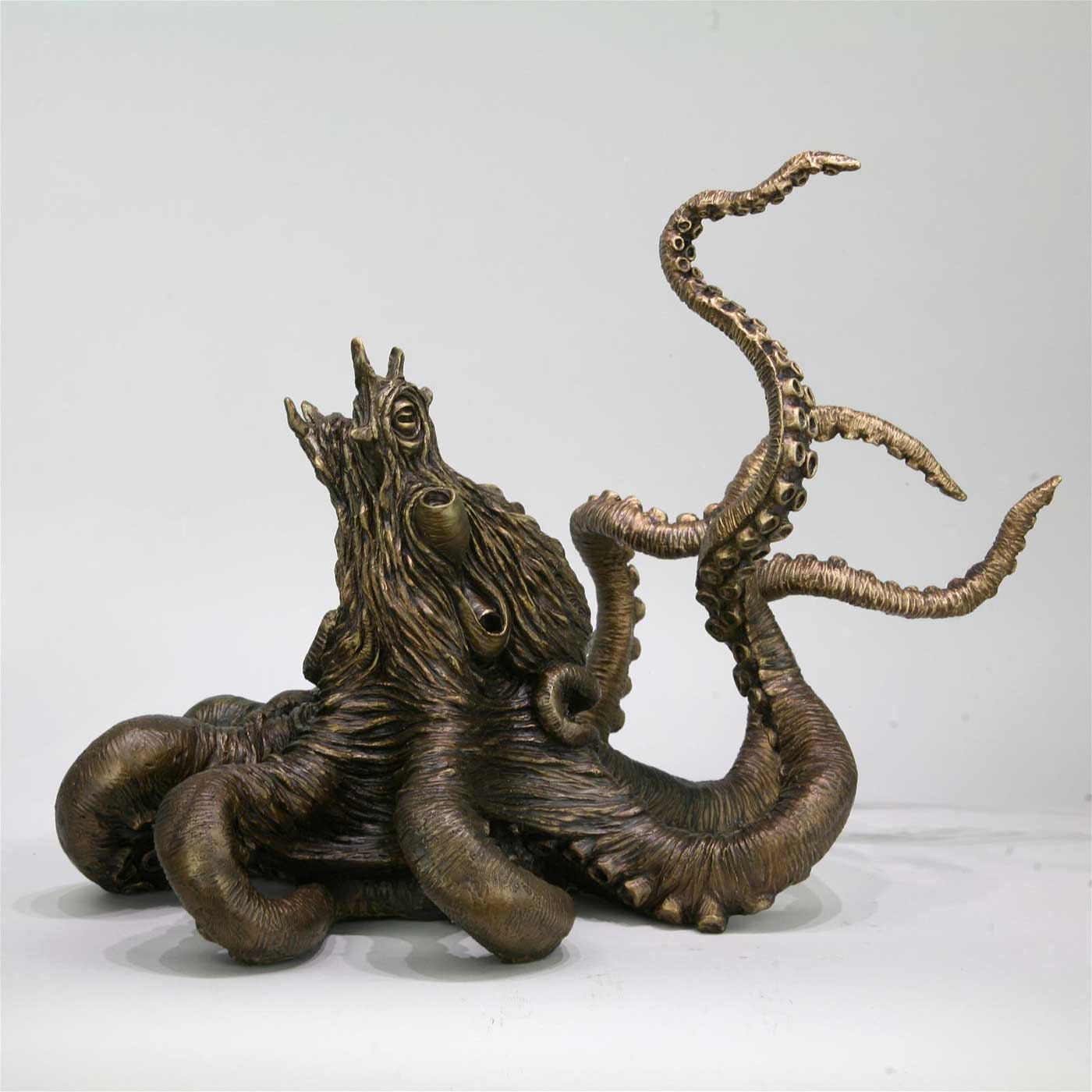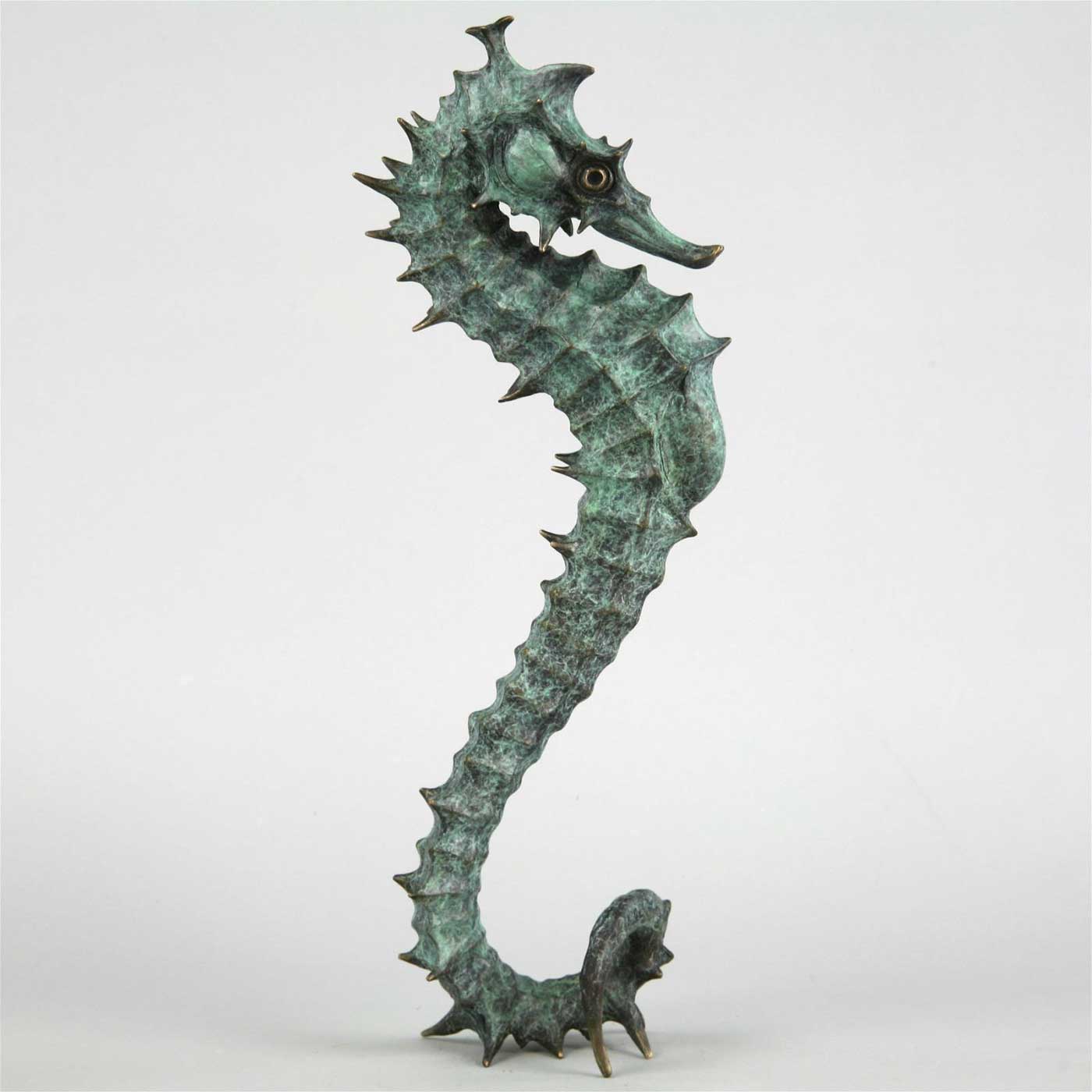Marine Animal Sculptures
/ Royal Society of Marine Artists
The Royal Society of Marine Artists Annual Exhibition showcases 3-D and sculptural work as well as paintings and drawings. A number of the selected sculptural pieces within the exhibition are depictions of a variety of different marine animals, which have been collated together within this blog post. By volume, oceans provide about 90% of the living space on the planet but climate change and global warming are disproportionately impacting the ocean, as increasing CO2 levels and greenhouse gas emissions cause changes in water temperature, ocean acidification and deoxygenation. It is vital to fight against climate change to protect and restore coastal and marine ecosystems and to ensure the wellbeing and safety of marine animals.
Mohamad Anvarmia’s piece Cheloniidae is a multilayered intricate laser-cut wood sculpture depicting a large marine turtle. Mohamed explains ‘turtles have always been my fascination. Growing up as kids in India, we had many sea turtles in our humongous homemade tank. With Cheloniidae, I wanted to capture the beauty of marine turtles, their flat streamlined wide and rounded shell and paddle-like flippers. I used wood because it is a natural material.’ There are detailed and intricate patterns over the surface of the turtle’s skin and multiple layers of wood make up the turtle’s geometric shell.
Mohamad Anvarmia Cheloniidae Poplar plywood, edition of 7, 26 x 39 x 3 cm £1,100
Next, there are two wire fish sculptures by Rosie Brown. The first is Framed Wire Atlantic Cod which Rosie has described the creative process of in detail: ‘The two individual sculptures are present in a lightly painted wooden oak frame, creating a sense of unity between the fish and a degree of separation from their surroundings as if a group of swimming cod has been focused and captured in the artwork. Different angles and positions of the cod create contrasting images for the viewer and presenting them in 2D highlights these details. Thick wire is used to create the outline and whilst one is a smooth outline of the entire fish, the other is angled hiding most of its body whilst making features such as its head shape and muscled figure more prominent. Using the outline as a base, thinner wire is then sculpted inside the structure and placed strategically throughout the entire fish to create a sense of mass, depth and movement, such as slightly curved lines around the cod’s eyes. The thinner wire is used to create details such as the eyes, fins and the fish’s pattern by carefully layering and bending the wire.’
Rosie Brown Framed Wire Atlantic Cod Metal & wood 36 x 56 x 4 cm £310
Her second piece is a 3D wire sculpture entitled Two Atlantic Mackerel where two mackerel fish are suspended at different heights from driftwood. Rosie explains: ‘Both are swimming in the same direction but at slightly different angles recreating their natural behaviour of travelling together in large schools whilst maintaining individuality. The mackerel were created by first forming a simple outline of the fish’s body in thick wire, then sculpting and intertwining navy blue, silver and black wire to create the mackerel’s colours and pattern as they appear underwater. The lines and structure of this wire create a solid yet also fluid silhouette of the entire fish demonstrating its streamlined muscular body, how the lower half tapers inwards and the constant repeated motion of its tail as it swims.’
Rosie Brown Two Atlantic Mackerel Metal and wood 30 x 35 x 9 cm £475
The next piece is Simon Conolly’s sculpture On Manoeuvres, made up of multiple individual glazed stoneware clay fish that have been cleverly positioned in a circular flow in the shape of one large fish. Simon grew up on the coast in Gosport on The Solent and since he was a child, he has been fascinated by the exquisite forms, fluid patterns and flowing movement of fish in tidal creeks. With this sculpture, he said: ‘I have always been equally interested in what I could not see (but could imagine) under the surface, as that which I could see upon the surface.’ Here he has imagined the flow and movement of what the fish could look like beneath the surface of the water.
Simon Conolly On Manoeuvres Glazed stoneware 120 x 75 x 10 cm £920
There is a collection of sculptures by Carolyn Simpson within the exhibition including Cormorant Preening and From the Deep. Cormorant Preening depicts a cormorant, an aquatic seabird with dark feathers and a long, thin, hooked bill. They are excellent divers and catch fish by diving beneath the surface of the sea. Carolyn explains that in her work she aims to reflect the fluidity and movement of her subjects rather than an accurate and realistic depiction of them, creating stylised and simplified sculptures that emphasise flow. The sculpture is a soapstone carving which is a soft but dense and heavy stone.
Carolyn Simpson ARSMA Cormorant Preening Soapstone 31 x 48 x 15 cm £1,200
Carolyn’s second sculpture From the Deep is a depiction of a dogfish shark that has been constructed from driftwood and rope which Carolyn gathered whilst beachcombing one holiday. Using materials found on the beach is an inventive way to use natural materials and that which would otherwise be swept back in the sea or be left to rot on the beach. Dogfish sharks are grey with white spots and are often found in dense schools. They are a nuisance to fishers as they take bait and damage fishing nets, but they are edible and yield liver oil.
Carolyn Simpson ARSMA From The Deep Driftwood 93 x 75 x 27 cm £850
The next piece is Stephanie Smith’s wire sculpture Curlew – Here Today… which is mounted onto a piece of driftwood. Stephanie explains: ‘This sculpture is a homage to the beautiful Curlew, an endangered species which appears on the RSPB Red List. I am currently an Ambassador for CurlewAction.org which is a charity working hard to preserve this species.’
The curlew is a wading bird and can be seen around the whole UK coastline with the largest concentrations found at Morecambe Bay, the Solway Firth, the Wash, and the Dee, Severn, Humber and Thames estuaries.Visit www.curlewaction.org for more information on how to preserve and protect the species.
Stephanie Smith Curlew - Here Today… Recycled iron wire 43 x 32 x 15 cm £350
Lastly, we look at a couple of the sculptures in Andrzej Szymczyk’s collection of work that is featured within the exhibition. Andrzej creates sculptures working in bronze, and he works to capture the character and likeness of his subjects rather than being realistically accurate. He explains his process: ‘I manipulate, distort, add and remove proportions, tensions, weights and scale in order to achieve the desired ‘feeling’. The subject’s movement and balance are important when expressing their nature.’
Octopus II is a bronze sculpture that Andrzej made in the first lockdown of 2020, shortly after he had been diving in Madagascar and had the pleasure of encountering an octopus. Andrzej tried to capture the octopus’ gaze as he felt it had been observing him. He is drawn to them for their intelligence and explains: ‘The octopus has a complex nervous system, excellent sight, and is the most intelligent and behaviourally diverse of all invertebrates. In laboratory experiments, octopuses can be trained to distinguish between different shapes and patterns. They have even been reported to practice observational learning and playing - by repeatedly bouncing toys against a current in their aquarium!’
Andrzej Szymczyk ARSMA Octopus II Bronze, edition of 8, 46 x 62 x 41 cm £8,000
Another of his bronze sculptures in the exhibition is Seahorse II. Andrzej explains that seahorses are also known as ‘hippocampus’, coming from Ancient Greek; hippo meaning horse and kampos meaning sea monster. He wanted to capture the segmented bony armour, upright posture and curled tail characteristic of a seahorse. Andrzej explains: ‘I can imagine where tales about sea monsters come from. The impression you get of a creature in its natural environment when your body is present and exposed with direct interaction, is far away from studying a creature in a laboratory, library or home-safe environment. I am trying to capture my impressions rather than recreate anatomically accurate representations of the creatures.’
Andrzej Szymczyk ARSMA Seahorse II Bronze, edition of 12 52 x 20 x 11 cm £4,000
We hope you enjoyed reading more about the artists and the inspirations behind their sculptures depicting a variety of beautiful marine animals. The sculptures are even more impressive in person as you’ll be able to see them in 3-D and gain a true understanding of their size and texture so we hope you are able to visit us in person, the exhibition is on from Thursday 30 September to Sunday 10 October 2021.
Article written by Hannah Martin
The Royal Society of Marine Artists Annual Exhibition is available to Browse & Buy online now, and in the gallery from 30 September to 10 October
Discover the Royal Society of Marine Artists Annual Exhibition now

